Mimosa roemeriana, Roemer's Mimosa
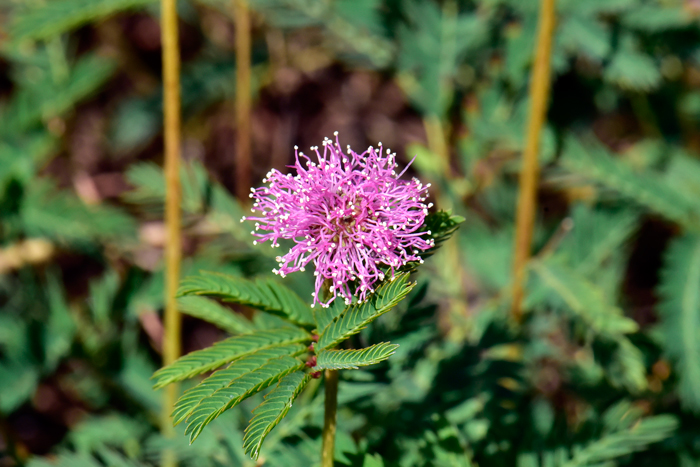
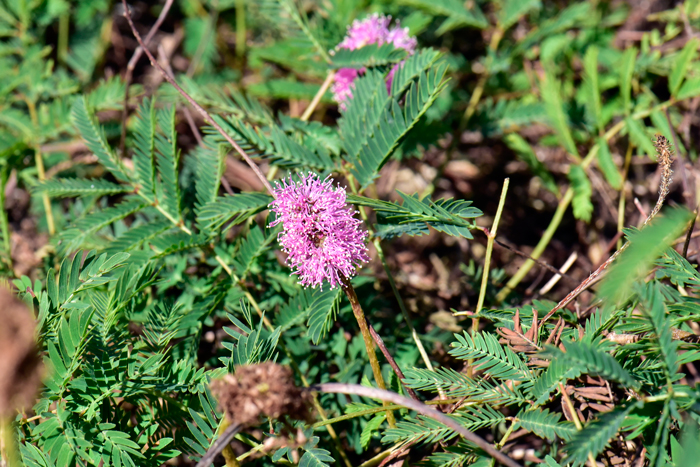
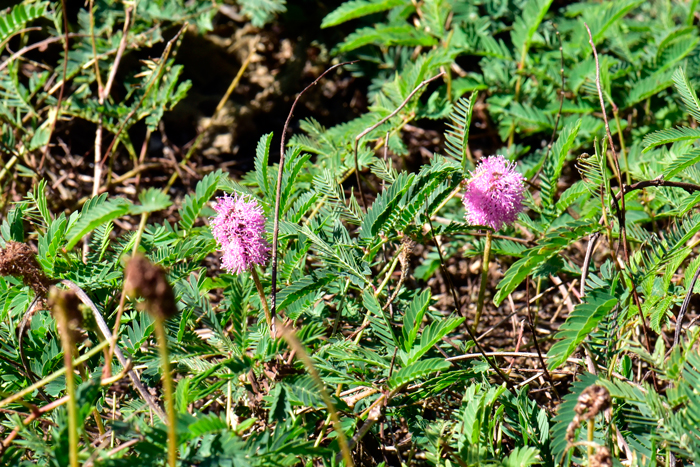
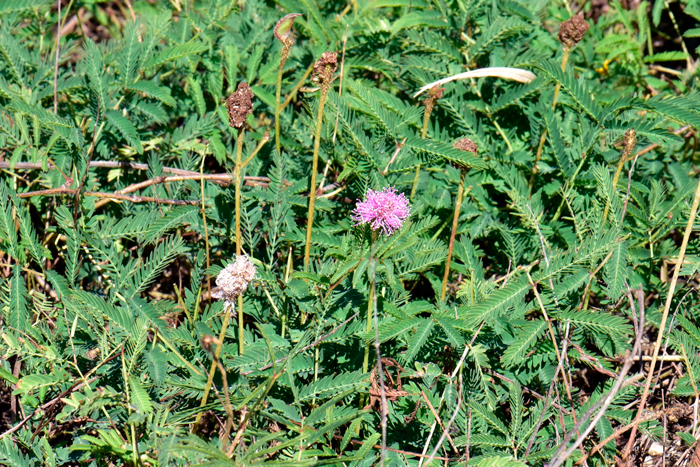
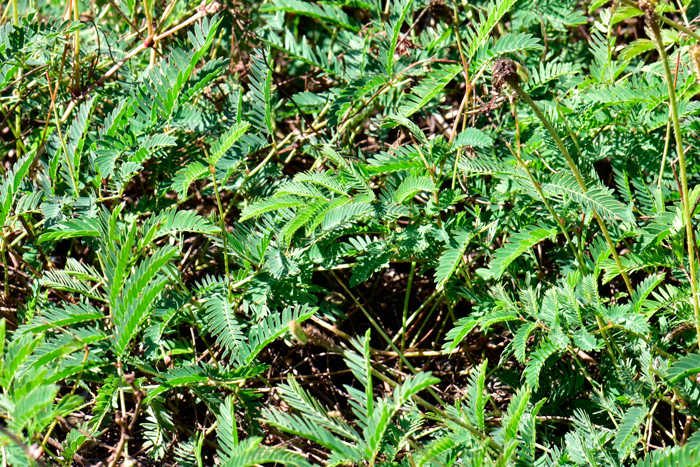
Scientific Name: Mimosa roemeriana
Common Name: Roemer's Mimosa
Also Called: Cat’s Claw, Catclaw, Pink Sensitive Briar, Roemer’s Sensitive Briar, Roemer’s Mimosa, Sensitive Briar, Sensitive Plant, Shame Vine
Family: Fabaceae or Leguminosae Family
Synonyms: (Mimosa quadrivalvis var. platycarpa, Schrankia roemeriana)
Status: Native to Texas.
Duration: Perennial
Size: 1 to 2 feet (.30 to .61 m), may spread horizontally several feet (up to 6 feet (1.82 m).
Growth Form: Roemer's Mimosa is a vining forb/herb; plants are low growing, trailing and prostrate; the stems are ribbed with numerous recurved prickles (thus the common name briar); the lower parts of the stems are rounded or 5-sided; the young stems are covered with tiny soft erect hairs or at times smooth.
Leaves: Roemer's Mimosa has green leaves arranged alternately on the stems; the leaves are pinnately compound; when touched the leaflet pairs quickly fold back looking like the leaves are ‘closing-up’, thus the name “sensitive”.
Flower Color: The flowers are showy pink or lavender, 1 inch (2.5 cm) puffball type flowers; the flowers are fragrant; the flowering stalk or inflorescence grows out from a leaf axil; the puffball "flower" consists of several small individual flowers containing 5 petals and 8 to 10 extending yellow or gold tipped stamens with pink filaments and yellow anthers; the fruit is a flattened pod at maturity and 3 to 6 times as wide as thick, the seed pods also are armed with prickles, seeds are almost square and smooth.
Flowering Season: April to July
Elevation: 600 to 3,000 feet (183 to 914s m)
Habitat Preferences: Roadways, pastures, fields, prairies, rocky-areas, calcareous and chalky type soils and sandy soils.
Recorded Range: Mimosa roemeriana is found primarily in North Central Texas and particularly on the Edwards Plateau, where it is common and wide-spread. Possibly native to Oklahoma.
North America & US County Distribution Map for Mimosa roemeriana.
North America species range map for Mimosa roemeriana:
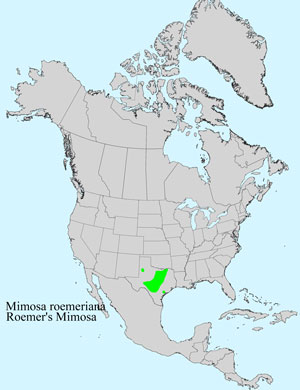
U.S. Weed Information: Not considered a weed as such but regarded as an important lawn pest in Galveston County, Texas in which areas where this plant can thrive, the plants may quickly become a major problem without quick preventative measures.
Invasive/Noxious Weed Information: Unknown
Wetland Indicator: Unknown
Threatened/Endangered Information: Unknown
The genus Mimosa was published in 1753 by Carl Linnaeus, (1707-1778)
In the Southwestern United States: Arizona has 8 species of Mimosa, California has 3 species, Nevada and Utah each have 1 species, New Mexico has 10 species and Texas has 27 species. Data approximate, subject to revision.
Comments: Roemer's Mimosa is also called, among other common names, “sensitive briar” because its leaves close-up quickly when touched. Members of the genus Mimosa are among the few plants that are capable of this fast, rapid movement.Also see in Southwest Desert Flora; Catclaw Mimosa, Mimosa aculeaticarpa biuncifera and Velvetpod Mimosa, Mimosa dysocarpa.
The species epithet roemeriana is named in honor of Ferdinand von Roemer, (1818-1891), a German geologist who lived in Texas from 1845 to 1847 and became known as the "father of Texas geology". Mr. Roemer collected specimens in the New Braunfels, Texas, area from 1845-47.

